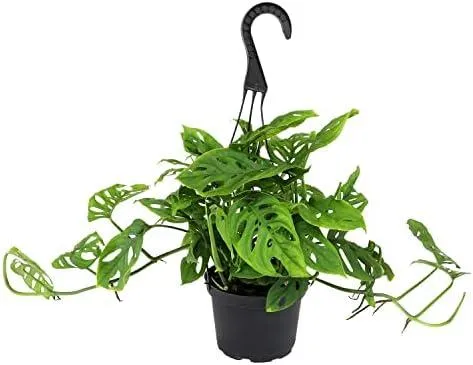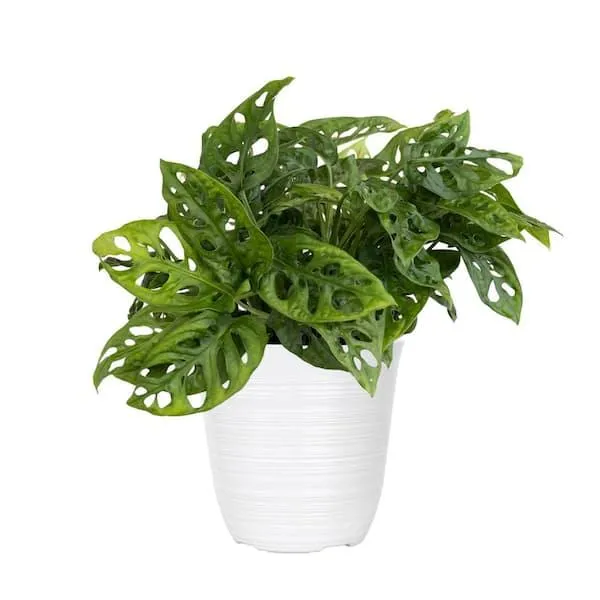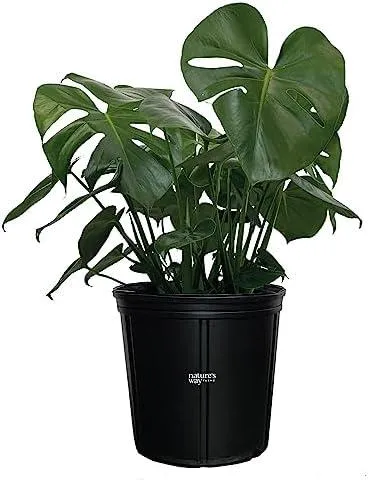Can Cats and Monstera Deliciosa Plants Coexist peacefully?
If you’re considering getting a monstera deliciosa plant but already have cats at home, you may be wondering if the two can live harmoniously. Monstera, also known as the Swiss cheese plant or split-leaf philodendron, is a popular houseplant known for its beautiful large leaves with holes and splits. However, its toxic sap and tempting foliage also make it intriguing to curious cats. In this article, I’ll discuss the concerns with having monstera around cats and provide tips on how to safely keep both in your home.
Is Monstera Toxic to Cats?
The short answer is yes – most parts of the monstera plant are mildly toxic if ingested by cats. If a cat chews on or eats pieces of the leaves, stem or roots, it can cause mild stomach upset like vomiting or diarrhea. From my experience as a veterinary nurse, the biggest risk is typically not from a single small exposure but from a cat who continually nibbles on the plant. The sap contained in all parts of the monstera contains calcium oxalate crystals which can irritate the mouth and potentially the gastrointestinal tract if enough is consumed. While deaths are rare, it’s still best to keep monstera well out of reach of curious kitties.
Why Are Cats Drawn to Monsteras?
There are a few key reasons why monstera leaves seem so irresistible to cats:
- Visual stimulation – The large, colorful leaves with interesting splits and holes pique a cat’s natural instinct to hunt and play. They may bat or chase the leaf edges.
- Scent marking – Some cats are inclined to rub their face on new surfaces to deposit scent glands. Monstera’s waxy leaves are a tempting canvas.
- Oral fixation – Many cats enjoy chewing plants for entertainment or to relieve boredom. They may nibble the leaf edges or try to eat pieces.
Additionally, houseplants that thrive indoors often don’t have strong defensive mechanisms compared to outdoor plants. This makes monstera more vulnerable to feline curiosity than it would be in its natural habitat. Its large leaves offer easy access too.

Tips for Cat-Safe Monstera Care
So how can you keep your monstera happy and healthy while still having kitty companions? Here are some tips from my experience:
- Place the plant high up, ideally hanging or on a tall shelf out of reach. Cats can leap tall shelves in a single bound!
- Use a hanging macrame plant hanger or wall shelves to display the plant well above floor level. Monsteras vine beautifully too.
- Designate a cat-free plant room or wall space. Close the door when not supervised.
- Repot into secure, heavy ceramic or concrete pots without drainage holes. Cats may try tipping over lightweight plastic.
- Cover the soil surface with decorative pebbles or aquarium gravel to discourage digging and reduce access to tempting leaves.
- Use aluminum foil, double-sided sticky tape or motion-activated air spray around the plant’s perimeter as a deterrent.
- Provide environmental enrichment like scratching posts, interactive toys and shelving/cat trees for kitty entertainment elsewhere in the home.
With some creative problem-solving, you can absolutely have both cats and monstera coexist peacefully in your indoor space. It just takes a bit of extra effort to cat-proof the plant from nibbles and bats. Focusing your cat’s natural instincts into approved scratching and play areas also helps divert attention from forbidden foliage.
Handling Potential Exposure
No precaution is foolproof though, so it’s good to know what to do if a nibble or taste does occur. Remain calm, and do these steps:
- Gently wipe or rinse out the cat’s mouth with a cold, wet cloth to remove any remaining plant material.
- Monitor closely for signs of vomiting, diarrhea, reduced appetite or lethargy over the next 24 hours.
- Seek veterinary attention right away if symptoms appear severe or don’t improve. They may recommend hydration support or inducing vomiting.
- In most mild cases, the cat likely won’t need other treatment and symptoms will pass in a day or two.
- Move or remove the plant until you can completely cat-proof the area to prevent repeat mishaps.
While none of us can say “never” with certainty, following these guidelines gives you a strong chance of keeping both cats and monstera happy home companions. With care and supervision, they don’t necessarily have to be mutually exclusive.

I hope these tips help provide some insight into safely enjoying your monstera plant even with feline friends around. Let me know if you have any other questions! Proper precautions help balance pets’ natural instincts with beautiful indoor greenery.
Monstera Deliciosa Care Guide
| Care Tip | Detail |
|---|---|
| Light | Medium to bright, indirect light. Avoid direct light which can burn leaves. West or east facing window is ideal. |
| Water | Water when top 2 inches of soil is dry. Allow to drain well and do not allow plant to sit in water. |
| Humidity | Prefers humidity between 50-60%. Use pebble trays or humidifier. May develop fenestrations/splits in leaves with higher humidity. |
| Soil | Well-draining, airy soil. Commercial potting mixes work well. Do not allow to sit in water. |
| Fertilizer | Use liquid houseplant fertilizer monthly during spring and summer. Dilute to 1/2 or 1/4 strength. |
| Temperature | Grow below 75°F. Tolerates 60-85°F but may go dormant below 65°F. |
FAQ
-
Can cats eat monster deliciosa plants?
Basically, monster deliciosa plants can be poisonous to cats if eaten. The spines on the leaves and stems can hurt their mouths as well. It’s better to keep these types of houseplants up high or in cat-proof locations.
-
Will a monster deliciosa hurt my cat?
While the plant itself won’t necessarily harm cats, the spines can sort of stab their tongues. Those things are awfully sharp! Some cats may nibble the leaves out of curiosity, but it’s best not to let them munch on monster plants. Their mouths will thank you for it.
-
Can I put my monster plant on the floor?
You might want to keep monster deliciosas up high if you’ve got a curious cat around. Those leaf spikes are no joke – I knew a cat that poked his paw on one once and it was not pretty. Ouch! Nevertheless, most felines will leave monster plants alone if they’re out of reach. I suppose a cat could knock it over by accident though.

-
Will my cat eat monster deliciosa fruit?
While the fruit of monster deliciosa plants is not toxic, the spines on it can potentially hurt your cat’s mouth. So it’s best not to let Fifi taste test any monster fruit just to be safe. Kitties have no reason to eat them anyway since they don’t provide much nutritional value. Maybe save fruit snacks for yourself instead!
-
Can monster plants kill cats?
No, monster deliciosa plants are generally not lethal to cats. However, eating large quantities could possibly cause some stomach upset. The spines are more of an issue than any toxicity. As long as curious kitties don’t make a meal out of monster leaves, they should be fine living with one as a houseplant. Just be sure to provide scratching posts and toys as safer alternatives.
-
What if my cat eats a small bite?
If your furry friend happens to nibble a tiny bit of monster deliciosa, it’s likely nothing to freak out about. But I’d definitely keep an eye on them and watch for signs of poisoning such as vomiting. You might want to call your vet as a precaution too. They can probably reassure you or tell you what to look out for. Chances are one little taste won’t do much harm. Still, it’s best to cat-proof plants altogether.
-
Are there any safe houseplants for cats?
While monster deliciosas may not be the best choice with kitties around, there are definitely houseplants that can coexist peacefully with cats. Some that are basically harmless include English ivy, bamboo palm, peace lily, pothos or zz plant. Just make sure little claws don’t pull them down and cause a mess! Ask your vet or do your research to find cat-friendly greenery.

-
In summary, can cats and monster plants live together?
It appears that monster deliciosa plants are generally not a major health risk to cats if precautions are taken. However, the spines do pose potential harm to curious kitty mouths. So unless you’ve got a perfectly well-behaved cat, it’s probably best to display your monster up high out of paw’s reach. There are also awesome low-risk houseplants that cats can safely coexist with instead. But what do you think, readers – does your feline friend get along well with your monster pal? Feel free to share your thoughts!
